Jacobs Electronics Off-Road Ultra Team
""Houston, We Have Ignition!""
Background
Unlike the Johnny-come-lately's of the auto-electronics world, Dr. Christopher Jacobs founded his ignition empire way back in 1974, drawing on his experience in the field of variable rate feedback. Lessons learned in creating the variable rate pacemaker dovetailed with the good Dr.'s lifetime interest in the automotive world, and resulted in another "pacemaker" of sorts - one for the internal combustion heartbeat.
Over the years, Ol' Doc Jacobs has produced a steady stream of high tech goodness from the labs of Midland Texas, and off-roaders have been quick to bolt his products on to everything from desert trucks, to mud boggers, to SUVs. While designed with "general purpose / high performance" usage in mind, products like the "Energy Team", and "Ultra Team" have been used with great success throughout the off-road world. Until now, Jacobs hasn't marketed a specialized "Off-Road" type ignition. Why? Well, to put it bluntly, they didn't have to. Why mess with what works?
Unless you've just returned from your Y2K bunker in Idaho, the sport of extreme rock crawling has been making tremendous leaps in popularity - and competitiveness. Blasphemous as it sounds, even the adrenaline junkie desert racers are learning that the "how slow can you go?" style of off-roading can be every bit as addicting as a 140 mph jaunt down the Baja peninsula.
Combined with extreme side-hill angles, and low RPM maneuvering, crawlers see a unique set of conditions different from any other type of off-roading - and that brings with it some unique problems.
Crawlers need low end torque in abundance. Often, this is achieved through ultra low gearing, via transfer case mods, low diff gears, or add-on reduction boxes. Unfortunately, none of these are of any use when the engine is blubbering, and choking itself into a stall. Like it or not, steep angles and side hills are a carburetor's worst nightmare. So, short of swapping over to a bucks up fuel injection system, what can you do?
Lets look at the why this flooding occurs. While there are other reasons for a carb to choke up under extreme angularity, I use this example, as it is easiest to understand.
Most often, carb-flooding results from raw fuel being dumped out the float bowl vents, and into the throttle body itself, wreaking havoc with the Air/Fuel ratio, and causing a stall. When a crawler is climbing a 70 deg incline, you can believe that that's a "couple" more degrees more than Detroit had in mind when their engineers sat down to design a working carb. Side-hilling presents a similar circumstance.
So, what we have here is not only a carburetor problem, but an "ignition" problem as well. Why? Simple. If an engine is "blubbering", some, but not enough combustion is taking place. What it needs is more spark to ignite the overabundance of fuel in the combustion chamber.
Jacobs Electronics "Off-Road" Ultra Team - At A Glance
- Multiple Spark technology which uses a series of sparks per combustion event, per cylinder, that results in significantly higher fuel burn efficiencies than a "stock" single spark ignition system
- "Start spark" technology which greatly increases spark output during cranking and starting for fast, easy starts, regardless of temperature
- "Acceleration spark" which senses acceleration, and adjusts the spark intensity automatically.
- Driver adjustable rev-limiter which can prevent expensive engine damage caused by a missed shift or poor traction (like a patch of ice).
- Anti theft feature which prevents your truck or SUV from being stolen. It causes the vehicle to act like its running out of gas for 20 seconds before shutting down the ignition system.
Off-Road "Energy Pak"
As we said earlier, ignitions like the Jacobs Omni Pak are great all around products for off-road usage. Unlike CDI, HDI, or standard multi-spark ignitions, the Jacobs Energy Pak uses the spark plug as a sensor, reading the load of each cylinder, and adjusting it's spark output accordingly. This usually results in a smoother idle, more power, and better fuel economy. In fact, Jacobs guarantees these and several points of improvement over your stock system, or your money back. They are pretty confident in their product.
Now with the "Off-Road" Ultra Team, Jacobs has built upon the strengths of the Ultra Team product line, and optimized it for the lower RPM range, where most off-roaders, and especially Rockcrawlers, spend most of their time. Add to that, the all new "Uphill Power Module", and "Torquer" coil, and you've got an ignition package that's ready to "Rock".
Uphill Power Module
At the heart of the new Ultra Team is the uphill power module. In a nutshell, here's how it works. Once a vehicle achieves a certain angle (adjustable by mounting position), the "UPM" signals the Jacobs control unit to apply full voltage to the plugs. The result? All the benefits and functionality of the Jacobs electronic ignition (smoother idle, better economy etc.), and full spark power when the terrain gets demanding.
Torquer Coil
Unlike traditional High-Output coils that are built for high RPM useage, the Jacobs Torquer coil is optimized for low RPM performance. That translates into more spark in the RPM range where most performance coils are weakest - the very RPM range where most off-road vehicles operate. It doesn't take a rocket scientist to realize that better low RPM spark means better low RPM performance.
Energy Core Plug wires W/ Creamic boots
Getting all that extra voltage to the spark plugs falls upon a set of Jacobs' Energy Core wires. Complete with heat resistant (more like impervious) ceramic boots, these 8.8mm wires keep the voltage directed to the plugs,and offer far less internal resistance than your average factory, or parts store models.
Installation - So simple a kid could (and did) do it.
Being a single dad, I have developed an 11-year-old daughter that likes working on vehicles more than I do. So when it came time to bolt Doc Jacobs' finest under the hood of our "Flashback F-150", I decided....
No Britt, you can't help.
"But Why Dad"?
Because you're going to -do it- yourself.
"Cool!"
Crazy as it may seem, installing the Off-Road ignition really is so simple that a kid can do it. The directions are exceptionally detailed, clear, and easy to understand. Best of all? It mates seamlessly with your factory components. Now I will say that drilled a couple holes, shortened a couple wires, and re-gapped the plugs to Jacobs specs for her, but all in all, Brittinay (A.K.A "The duct taped child") did in fact perform the actual installation on this product. While installation will vary from vehicle to vehicle, the bottom line is that Jacobs has taken all of the guesswork out of the process. You simply choose a mounting location, mount the Torquer coil, Energy Pak and UPM, plug it in, and go.
It Lives. It Works. I'm Impressed!
With a quick flip of the key, our tired 351M fired to life instantly. Right off the bat, we saw an increase in idle speed of over 100 RPM. "This bodes well" I thought. Around town, the big Ford felt snappier. There was no mistaking it - More power had indeed found it's way under my hood. The big question would be "Fuel Mileage".
In my initial conversation with Jacobs, I related my tale of woe. 7-8 MPG on it's best highway day, and more like 5-6 around town with a good tailwind. The good doctor's associates assured me that their product would noticeably improve my mileage. So after a quick trip to the gas pump, I was off on a 300 mile round trip to test the accuracy of that assertion.
Off-Road, the ignition performed up to Jacobs claims. During off-camber maneuvers that had previously given the truck flooding problems, we noticed that we could keep moving a considerable distance past the point where flooding had left us cranking the starter before.
All in all, you don't need high dollar equipment to determine that Jacobs Off-Road Ignition works as advertised. Then again, you don't usually go wheeling with that kind of equipment anyway. At least I hope not. What matters is that when you step on the rude pedal, needed power is there. What matters is the longer distances traveled between fuel stops. These are real, tangible benefits you can see, and feel, and that's the kind of benefits Jacobs Off-Road Ultra Team provides.
After our engine swap, we bolted the Jacobs back up and added a K&N 14x3 in open element filter, Edelbrock 600cfm Performer carb and matching intake. After a 500 mile break in, we made the switch to Mobil 1 30W synthetic. The result? The Jacobs Off-Road Ultra Team helped propel us to a new high of 12.5 mpg highway over the same loop.
At the end of the day, a 2.5 mpg increase is worth the price of admission alone, but when you factor in the added power, and more importantly, more "useable" power, We'd say that Jacobs has yet another winner on it's hands.
 www.jacobselectronics.com
www.jacobselectronics.com 500 N. Baird st Midland TX 79701 1-800-627-8800 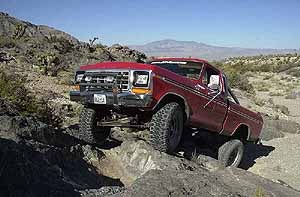
Follow @Off-Road
Buyers GuidesVisit Forums TRUCKS & 4x4 FORUMS |

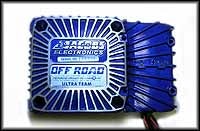
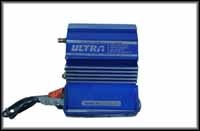
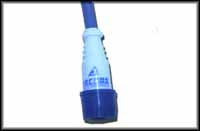
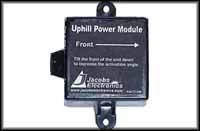
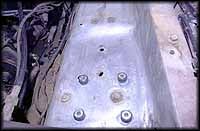




 Your Privacy Choices
Your Privacy Choices